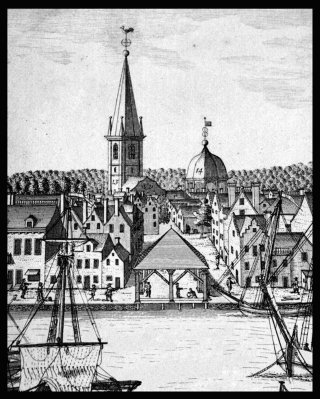Mannahatta Park
New York's Municipal Slave Market
On Wall Street, between Pearl and Water Streets, a market that auctioned enslaved people of African ancestry was established by a Common Council law on November 30, 1711. This slave market was in use until 1762. Slave owners wanting to hire out their enslaved workers, which included people of Native American ancestry, as day laborers also had to do so at that location. In 1726 the structure was renamed the Meal Market because corn, grain and meal—crucial ingredients to the Colonial diet—were also exclusively traded there.
Slavery was introduced to Manhattan in 1626. By the mid-18th century approximately one in five people living in New York City was enslaved and almost half of Manhattan households included at least one slave. Although New York State abolished slavery in 1827, complete abolition came only in 1841 when the State of New York abolished the right of non-residents to have slaves in the state for up to nine months. However, the use of slave labor elsewhere for the production of raw materials such as sugar and cotton was essential to the economy of New York both before and after the Civil War. Slaves also cleared forest land for the construction of Broadway and were among the workers that built the wall that Wall Street is named for and helped to build the first Trinity Church. Within months of the market's construction, New York's first slave uprising occurred a few blocks away on Maiden Lane, led by enslaved people from the Coromantee and Pawpaw peoples of Ghana.

Check out your park's Vital Signs
Clean & Safe
Green & Resilient
Empowered & Engaged Users
Share your feedback or learn more about how this park is part of a
Vital Park System



